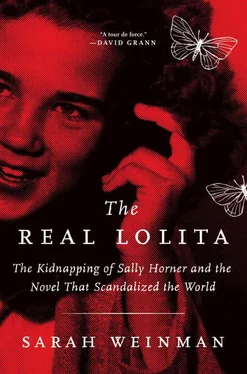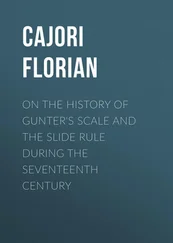No company represented Camden’s sense that the future was theirs for the taking more than RCA Victor, the phonograph company. In June 1949, it had introduced the “45,” a smaller, faster alternative to Columbia’s “LP” record format. RCA Victor also began producing technology for television, making equipment required by broadcast studios as well as for television sets regular home-buyers could acquire.
A great many forces underlay Camden’s eventual negative transformation. But Sally Horner’s abduction wasn’t the spark. Rather, the morning of September 6, 1949, seems to me like the inflection point between progress and backlash, hope and despair, promise and decline. The scope of the crime seemed an unfathomable one-off, but its grotesque repetition in the decades to come demonstrates how a singular evil can become all too mundane.
AT EIGHT O’CLOCK that morning, a mother woke up her son for breakfast. He’d been out late the night before, sitting and stewing in a movie theater on Market Street in Philadelphia, waiting for a date who never showed. The son’s homosexuality wasn’t quite a secret, but nor could he flaunt it when sex between men was still very much against the law.
That his date, a man with whom he’d been in the midst of a weeks-long affair, stood him up was indignity enough. Then he’d returned to his home in Cramer Hill to find the fence he built to separate his house from his neighbors’ home had been torn down.
The man drank a glass of milk and ate the fried eggs his mother, Freda, prepared. Then he went into the basement, whose walls were covered in memorabilia from the war he’d fought in, and where he had written down meticulous notes on each enemy soldier he’d killed. He regarded his nine-millimeter pistol, a Luger Po8, for which he had two full clips and thirty-three loose cartridges, and thought about the list of people—neighbors, shopkeepers, even his mother—he wanted to wipe off the face of the earth.
He grabbed a wrench and went back to the kitchen. He raised it, threatening Freda. “What do you want to do that for, Howard?” she cried. When he didn’t answer, she repeated the question as she backed away from him, then ran out of the house to a neighbor’s. He retrieved his Luger and ammunition from the basement, as well as a six-inch knife and a five-inch pen-like weapon tricked up to hold six shells. Then he cut through the backyard and shot at the first person he saw: a bread deliveryman sitting in his truck.
Howard Unruh missed his first target, but he wouldn’t miss many more. Twenty minutes. Thirteen dead. And a neighborhood, a city, and a nation forever marked by his “Walk of Death.”
FOR MARSHALL THOMPSON, Unruh’s murderous spree hit too close for comfort. He and his family lived around the corner from Unruh and his mother, at 943 North Thirty-Second Street. Most of those who died or were injured on the morning of September 6 were Unruh’s neighbors on River Road, which was the main thoroughfare of East Camden.
Thompson might have gotten his hair cut at Clark Hoover’s barbershop a few feet down River Road. That awful morning, the barber took a fatal shot, as did six-year-old Orris Smith, perched on a hobbyhorse inside the shop. If Thompson needed his shoes repaired and shined, he likely got it done at the repair shop next door, where Unruh killed the cobbler, John Pilarchik. Down the street was the tailor shop, owned by Thomas Zegrino. He was out when Unruh arrived, but Zegrino’s new wife, Helen, was not, and she paid the price.
Unruh then shot Alvin Day, the television repairman. James Hutton, the insurance agent, made the dreadful mistake of running out of the drugstore to see what the commotion was all about, and also died. So, too, did a mother and daughter, Emma Matlack, sixty-six, and Helen Matlack Wilson, who’d driven in from Pennsauken for the day and failed to comprehend the massacre unfolding. Unruh shot them dead, and Helen’s twelve-year-old son, John, took a bullet in the neck. He died the next day in the hospital.
Others were injured. Like Madeline Harrie, caught in the arm by a bullet after Unruh’s first two missed, and her son, Armand, who tried vainly to tackle Unruh when he invaded their home.
Unruh moved on to his worst grudge late in the rampage, hunting down his next-door neighbor, Maurice Cohen, owner of the drugstore, to make him pay for the business with the fence as well as other perceived grievances. Not spotting him in the store, Unruh went upstairs to the family apartment. As Maurice climbed onto the roof, his wife, Rose, shoved their son, twelve-year-old Charles, into a closet, and then hid in a separate one. Unruh searched the apartment and then went out on the roof, where he caught a glimpse of Maurice running away. Unruh fired into the druggist’s back. The shot jerked Maurice off the roof and he was dead before hitting the street.
Unruh went back inside and fired his Luger several times into the closet where Rose was hiding. She died instantly. Maurice’s mother, Minnie, was in the bedroom, in a frantic state as she tried to get police on the phone, when Unruh caught up to her. He shot her in the head and body. She fell back on the bed and died there.
Charles stayed hidden until it was utterly quiet. When officers finally found him, he would not be comforted—he’d heard everything. Charles leaned halfway out his apartment window and screamed, “He’s going to kill me. He’s killing everybody.”
Howard Unruh had walked down the stairs and made his way to the Harries’ place. There he discovered he was out of ammunition. Hearing the police sirens, he doubled back to his mother’s house to await his fate.
IN A LARGER CITY, where officers didn’t walk the beats where they lived, Marshall Thompson might not have taken part in police efforts to apprehend Howard Unruh. But it’s unlikely Thompson could have begged off even if he wished. One of Thompson’s colleagues on the Camden detective squad, John Ferry, also lived in Unruh’s Cramer Hill neighborhood. The summer before, Ferry had tried to help Unruh find a job as a favor to the man’s uncle, a deputy fire chief.
Ferry had just finished up a midnight-to-eight shift. He was on his way home when he saw his insurance man dead in the street, as well as other victims. “When the other cops started arriving I went home and came back with my shotgun,” Ferry recalled in 1974, the twenty-fifth anniversary of the massacre. With the body count rising and ambulances blaring to and from Cooper Hospital, Thompson was one of more than four dozen cops who descended upon Cramer Hill that morning.
Howard Unruh had barricaded himself in his home. It was up to a group of policemen led by Detective Russ Maurer to figure out how to coax him out. Maurer sidled up to the front of the house. A throng of cops, including Thompson, covered Maurer, poised to throw tear gas through the window if Unruh acted rashly. As Courier-Post columnist Charley Humes observed, “Russ [Maurer] could have paid with his life, because the killer seldom missed. That was a brave act.”
John Ferry was crouched with several other policemen in Unruh’s backyard, awaiting any sign of the man. When Unruh appeared in the window, Ferry turned to James Mulligan, his supervisor on the detective unit, and asked, “Jim, should I take his head off?”
“No,” replied Mulligan. “There has been plenty of killing.”
Unruh later told police he “could have killed Johnny Ferry… any time I wanted.” Ferry’s past attempt to find Unruh a job may well have saved his life, and perhaps the others. Unruh made his decision. “Okay. I give up, I’m coming down,” he shouted to the cops down below.
“Where’s that gun?” a sergeant yelled.
“It’s on my desk, up here in the room,” Unruh said, then repeated: “I’m coming down.”
Читать дальше












